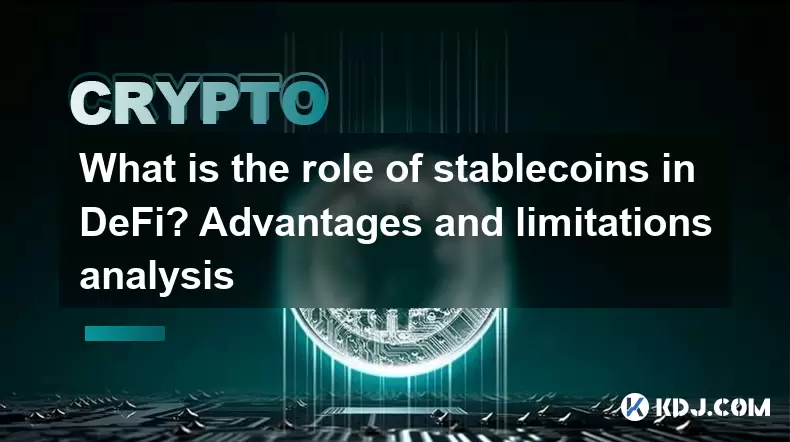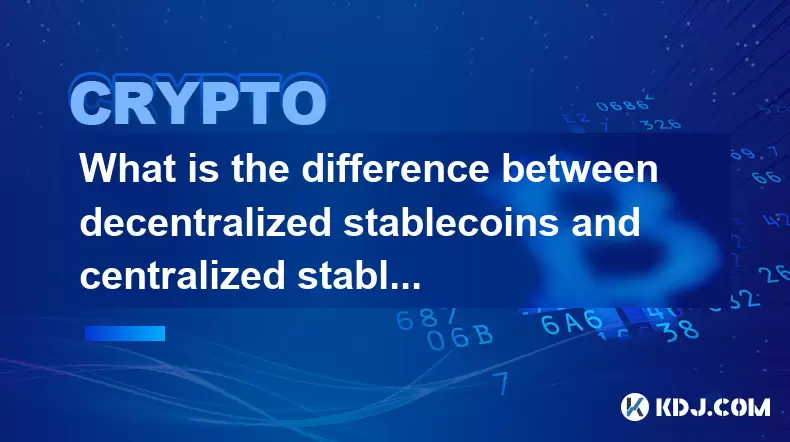-
 Bitcoin
Bitcoin $118300
-0.58% -
 Ethereum
Ethereum $3825
0.11% -
 XRP
XRP $3.137
-0.71% -
 Tether USDt
Tether USDt $0.9999
-0.01% -
 BNB
BNB $803.9
-3.37% -
 Solana
Solana $181.5
-1.94% -
 USDC
USDC $0.9999
0.01% -
 Dogecoin
Dogecoin $0.2238
-2.51% -
 TRON
TRON $0.3358
2.12% -
 Cardano
Cardano $0.7844
-2.16% -
 Hyperliquid
Hyperliquid $43.31
-1.48% -
 Sui
Sui $3.807
-4.04% -
 Stellar
Stellar $0.4203
-1.96% -
 Chainlink
Chainlink $17.79
-3.00% -
 Bitcoin Cash
Bitcoin Cash $567.8
-1.34% -
 Hedera
Hedera $0.2614
-4.30% -
 Avalanche
Avalanche $24.19
-4.46% -
 Litecoin
Litecoin $109.2
-0.74% -
 UNUS SED LEO
UNUS SED LEO $8.969
-0.01% -
 Toncoin
Toncoin $3.404
3.97% -
 Ethena USDe
Ethena USDe $1.001
-0.01% -
 Shiba Inu
Shiba Inu $0.00001307
-3.19% -
 Uniswap
Uniswap $10.33
-1.23% -
 Polkadot
Polkadot $3.884
-4.06% -
 Monero
Monero $312.9
-1.87% -
 Dai
Dai $1.000
0.01% -
 Bitget Token
Bitget Token $4.537
-2.24% -
 Pepe
Pepe $0.00001156
-3.40% -
 Cronos
Cronos $0.1437
-0.89% -
 Aave
Aave $282.8
-2.77%
What is the role of stablecoins in DeFi? Advantages and limitations analysis
Stablecoins provide stability in DeFi, enabling seamless lending, borrowing, and yield farming while reducing exposure to crypto market volatility.
Jun 14, 2025 at 06:28 am

Understanding Stablecoins in the DeFi Ecosystem
Stablecoins play a pivotal role in the decentralized finance (DeFi) landscape by providing a bridge between volatile cryptocurrencies and traditional fiat currencies. Unlike Bitcoin or Ethereum, stablecoins are designed to maintain a consistent value, typically pegged to assets like the US Dollar or gold. This stability makes them ideal for everyday transactions, lending, borrowing, and yield farming within DeFi protocols.
In DeFi platforms such as Aave, Compound, and Curve Finance, stablecoins serve as the primary medium of exchange. They enable users to earn interest without being exposed to the price swings typical of other crypto assets. By maintaining a steady value, stablecoins reduce the risk associated with holding volatile digital currencies, thereby encouraging broader participation in decentralized financial systems.
How Do Stablecoins Facilitate Lending and Borrowing?
One of the most significant functions of stablecoins in DeFi is their use in lending and borrowing protocols. Platforms like Aave and MakerDAO allow users to deposit stablecoins as collateral and borrow other assets against them. This functionality enables users to access liquidity without selling their crypto holdings.
- Users can deposit DAI into a lending pool and start earning interest almost immediately.
- Borrowers can take out loans in various tokens while keeping their stablecoin deposits intact.
- Interest rates are algorithmically determined based on supply and demand dynamics.
This system provides a seamless way to generate passive income while minimizing exposure to market volatility. Additionally, since stablecoins have predictable value, they simplify the calculation of loan-to-value ratios and liquidation thresholds, which are crucial for maintaining the health of lending platforms.
Stablecoins as a Medium for Yield Farming and Liquidity Provision
Yield farming has become one of the most popular activities in DeFi, and stablecoins are often at the heart of these strategies. Protocols like Curve Finance specialize in stablecoin swaps with minimal slippage, allowing liquidity providers (LPs) to earn fees while maintaining low impermanent loss risks.
- Providing liquidity in stablecoin pairs (e.g., USDC/DAI) reduces exposure to price volatility.
- Users can stake LP tokens in yield farms to earn additional rewards in governance tokens.
- Stablecoin-based pools often offer more predictable returns compared to volatile asset pairs.
By participating in these mechanisms, users contribute to the overall liquidity of the DeFi ecosystem while benefiting from compounding yields. The integration of stablecoins in automated market makers (AMMs) enhances capital efficiency and ensures smoother trading experiences for end-users.
Limitations and Risks Associated with Stablecoins in DeFi
Despite their advantages, stablecoins come with inherent limitations and risks that users must consider. One of the main concerns is the centralization aspect of certain stablecoins, particularly those issued by centralized entities like Tether (USDT) or Circle (USDC).
- Centralized reserves may pose counterparty risks if issuers fail to maintain full backing.
- Regulatory scrutiny could impact the availability and usability of specific stablecoins.
- Algorithmic stablecoins face challenges in maintaining peg during extreme market conditions.
These factors can undermine the trustless nature of DeFi and expose users to external shocks. Furthermore, reliance on a few dominant stablecoins increases systemic risk across the DeFi space, especially if one of them loses its peg or faces regulatory intervention.
Interoperability and Cross-Chain Use Cases of Stablecoins
Stablecoins also facilitate cross-chain interoperability, enabling users to move value seamlessly between different blockchain networks. Protocols like Chainlink CCIP and bridges such as Across Protocol rely on stablecoins for efficient cross-chain communication and settlement.
- Users can transfer USDC from Ethereum to Solana or Avalanche without converting to fiat.
- Stablecoins act as a universal layer for value transfer in multi-chain DeFi applications.
- Bridges using stablecoins help reduce conversion costs and improve transaction speed.
This interoperability enhances user experience and broadens the reach of DeFi services beyond single-chain ecosystems. As the multi-chain future unfolds, stablecoins will continue to be instrumental in connecting diverse blockchain environments.
Frequently Asked Questions
Q: Are all stablecoins used in DeFi fully backed by reserves?
A: No, not all stablecoins are fully backed. While some like USDC and DAI are either asset-backed or over-collateralized, others like UST (before its collapse) were algorithmic and did not hold direct reserves. Users should always verify the backing mechanism before use.
Q: Can stablecoins be used for governance in DeFi protocols?
A: Some stablecoins, like DAI, are integrated into governance systems where holders can vote on protocol changes. However, most stablecoins do not grant governance rights, as their primary purpose is utility rather than control.
Q: What happens if a stablecoin loses its peg in DeFi?
A: If a stablecoin loses its peg, it can cause cascading effects across DeFi platforms, including liquidations, reduced liquidity, and loss of user confidence. Protocols often implement safeguards like arbitrage incentives or emergency shutdowns to mitigate such events.
Q: How do stablecoins affect gas fees on DeFi platforms?
A: Stablecoins themselves do not directly influence gas fees. However, high demand for stablecoin-related transactions (like swaps or transfers) during network congestion can indirectly increase gas prices on blockchains like Ethereum.
Disclaimer:info@kdj.com
The information provided is not trading advice. kdj.com does not assume any responsibility for any investments made based on the information provided in this article. Cryptocurrencies are highly volatile and it is highly recommended that you invest with caution after thorough research!
If you believe that the content used on this website infringes your copyright, please contact us immediately (info@kdj.com) and we will delete it promptly.
- IPO, Bitcoin, and Treasury: A New Era of Crypto Investment?
- 2025-07-30 14:30:12
- Bitcoin, Binance, and Whales: Decoding the Latest Market Moves
- 2025-07-30 14:50:12
- Sinkhole Rescue: Migrant Workers' Heroism Sparks Fundraising in Tanjong Katong
- 2025-07-30 14:50:12
- Strategy, Bitcoin, and IPOs: A New York Perspective on 2025's Biggest Moves
- 2025-07-30 14:55:11
- TROLL Memecoin Mania: From Online Buzz to Market Reality
- 2025-07-30 14:55:11
- Coinbase, Circle, and the Power of Partnership: A New Era for Crypto?
- 2025-07-30 12:30:12
Related knowledge

What is the difference between decentralized stablecoins and centralized stablecoins? Pros and cons comparison
Jun 15,2025 at 09:42am
What Are Stablecoins and Why Do They Matter?Stablecoins are a category of cryptocurrencies designed to maintain a stable value, usually pegged to an e...

What is the role of stablecoins in DeFi? Advantages and limitations analysis
Jun 14,2025 at 06:28am
Understanding Stablecoins in the DeFi EcosystemStablecoins play a pivotal role in the decentralized finance (DeFi) landscape by providing a bridge bet...

How do algorithmic stablecoins work? Potential risks and market impact
Jun 12,2025 at 02:07pm
Understanding Algorithmic StablecoinsAlgorithmic stablecoins are a type of cryptocurrency designed to maintain a stable value relative to a specific a...

How do stablecoins anchor legal currencies? Technical and economic model analysis
Jun 16,2025 at 08:43am
Understanding the Concept of StablecoinsStablecoins are a category of cryptocurrencies designed to maintain a stable value relative to a specific asse...

How do stablecoins maintain price stability? Principles and risk analysis
Jun 11,2025 at 12:01am
Understanding the Mechanisms Behind Stablecoin StabilityStablecoins are a category of cryptocurrencies designed to minimize price volatility, often pe...

What is the operating mechanism of stablecoins? In-depth exploration of its stability principle
Jun 10,2025 at 09:28pm
Understanding the Core Concept of StablecoinsStablecoins are a unique category within the cryptocurrency market, designed to address one of the most s...

What is the difference between decentralized stablecoins and centralized stablecoins? Pros and cons comparison
Jun 15,2025 at 09:42am
What Are Stablecoins and Why Do They Matter?Stablecoins are a category of cryptocurrencies designed to maintain a stable value, usually pegged to an e...

What is the role of stablecoins in DeFi? Advantages and limitations analysis
Jun 14,2025 at 06:28am
Understanding Stablecoins in the DeFi EcosystemStablecoins play a pivotal role in the decentralized finance (DeFi) landscape by providing a bridge bet...

How do algorithmic stablecoins work? Potential risks and market impact
Jun 12,2025 at 02:07pm
Understanding Algorithmic StablecoinsAlgorithmic stablecoins are a type of cryptocurrency designed to maintain a stable value relative to a specific a...

How do stablecoins anchor legal currencies? Technical and economic model analysis
Jun 16,2025 at 08:43am
Understanding the Concept of StablecoinsStablecoins are a category of cryptocurrencies designed to maintain a stable value relative to a specific asse...

How do stablecoins maintain price stability? Principles and risk analysis
Jun 11,2025 at 12:01am
Understanding the Mechanisms Behind Stablecoin StabilityStablecoins are a category of cryptocurrencies designed to minimize price volatility, often pe...

What is the operating mechanism of stablecoins? In-depth exploration of its stability principle
Jun 10,2025 at 09:28pm
Understanding the Core Concept of StablecoinsStablecoins are a unique category within the cryptocurrency market, designed to address one of the most s...
See all articles

























































































